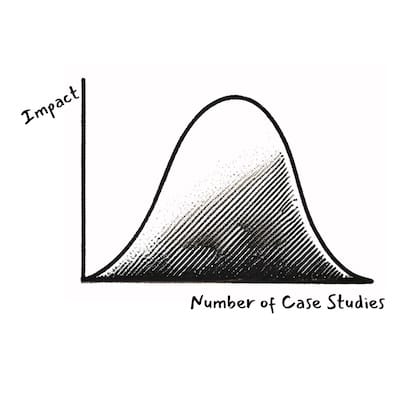Simon's First Law of Case Studies
When telling stories, striking a balance is essential.

Few people want to read a preachy non-fiction book. A text filled with "Do this, not that" and other trite bromides quickly becomes boring. Done properly, original and penetrating case studies engage readers and prove your book's overall thesis. (Yes, this means conducting your own research.)
Unfortunately, some authors rely too much upon this tactic—and their works suffer for it. A morass of ostensibly disconnected yarns frustrates the discerning reader. I was recently perusing a book on author marketing that suffered from this very affliction. So many parables, but so few real insights. Too much micro, not enough macro.
When it comes to these essential anecdotes, is there a middle ground?
Striking a Balance
There is a middle ground. Embrace it.
To that query, I answer an emphatic yes. Think of a bell curve.
Call it Simon's First Law of Case Studies: Authors need to include a certain number. Incorporating too many lessens a book's effectiveness. Ditto when there's a dearth of them.